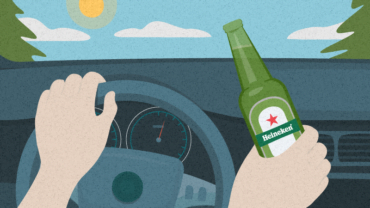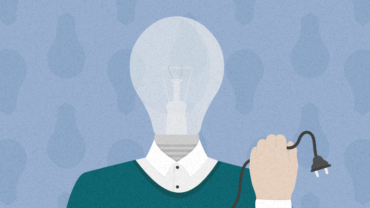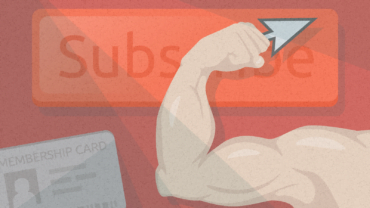Present Bias – Everything You Need to Know
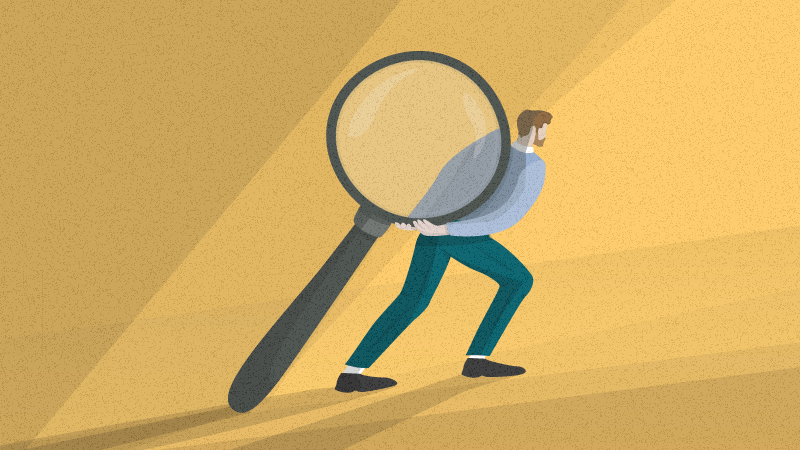
Article content:
What is present bias?
Present bias is the tendency to focus more on the present situation than the future when making decisions.
This can lead us to prioritize immediate rewards over future payoffs, even if that decision benefits us less overall.
Likewise, present bias can make us avoid short-term discomfort, even if it leads to larger negative outcomes in the long run.
We’ve all been there:
- Go to the gym or stay home?
- Study for the exam or watch TV?
- Save your money or go online shopping?
You know that making the easier or more satisfying choice today will mean lower energy, worse grades, and credit card fees tomorrow. But right now, this couch feels so cozy, the new season of your favorite show just dropped, and those shoes look so darn good…
Other terms for present bias include time discounting and present-orientedness.
Present bias is a form of hyperbolic discounting, which describes people who make decisions that are inconsistent over time.
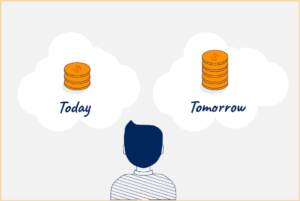
Source: Decision Boundaries
How does present bias work?
Present-biased people shift their priorities to fit their present situation.
They justify decisions that make the present moment easier, more pleasurable, or less painful – even if that justification is objectively irrational.

Discover ground-breaking ideas and fascinating solutions.
How present bias manifests in everyday life
Let’s say you want to buy a new car. You’ve done the research and found the perfect model.
The only issue is price: you’ll need to save for several months before you have enough cash.
You could wait, saving money and driving your current car until then. But with every day that passes, your current ride looks uglier and uglier and feels more and more uncomfortable.
So, you decide to finance the new car. Sure, you’ll be charged high interest fees, but you’ll get the keys today and can worry about money later.
This is present bias in action. Rationally speaking, most people would agree that the extra fees aren’t worth it just to have the car early. Despite this, you’ve prioritized the immediate desire for a new ride.
How present bias manifests in business
Present bias says that customers are more likely to use products that are easy to access and provide immediate benefits.
Present bias says that customers are more likely to use products that are easy to access and provide immediate benefits.
Many app developers have learned to exploit our bias toward the present moment. Social media platforms, for example, use gamification and social proof tactics to provide continual rewards and incentives.
One-click checkouts and free trials on streaming platforms let us keep shopping or enjoying content right now and worry about costs later on.
On the other hand, present bias can affect employees’ decision-making abilities, leading them to irrationally favor current profitability or productivity over the pursuit of more valuable long-term goals.
For example, a social media manager might try to hit their targets by quickly buying a thousand new followers instead of organically earning them. While meeting a KPI might bring near-term benefits, their action also results in a lower-quality social media channel.
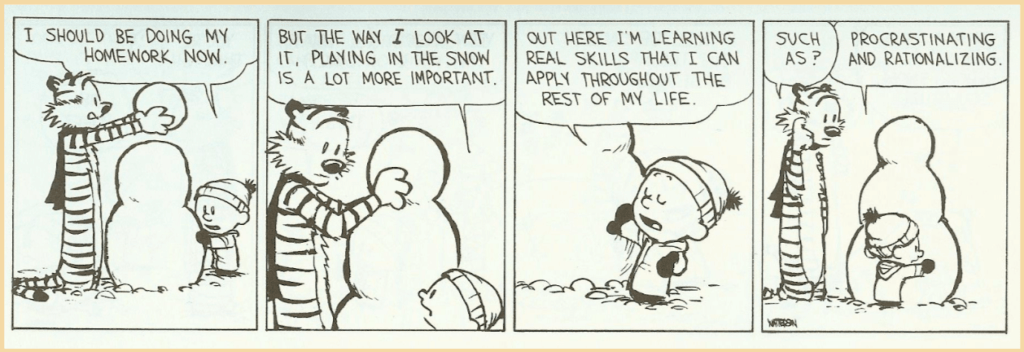
Source: Calvin and Hobbes
What impact does present bias have?
Here are three common impacts of present bias:
1. Decision quality varies with time frame
One interesting impact of present bias is that we tend to make less rational decisions when the outcomes of our choices are immediate, than if those same outcomes happened further away in the calendar.
The further away a future event is, the more patient we can be and the more rationally we seem to think.
The further away a future event is, the more patient we can be and the more rationally we seem to think.
2. Poor financial and healthcare decisions
Present bias can have a particularly large impact on things that occur over long time frames – such as events related to our finances and health.
Sticking to a savings or investment plan can be difficult for a present-biased person, even though the benefits of compound interest are undisputed.
In healthcare, many medical treatments require patients to undergo short-term stress, discomfort, or inconvenience to stave off more serious long-term complications.
Healthy habits require commitment and may provide only small direct benefits at any one time.
For example, a diabetes patient might find it hard to stick to evidence-based treatment recommendations for their condition, even though they believe in them.
3. Inaccurate future modeling
Thirdly, a bias towards the present can also cause us to think inaccurately about our future behavior.
A bias towards the present can also cause us to think inaccurately about our future behavior.
“I’ll feel more prepared to start my diet tomorrow,” you might think. “Today, I’ll treat myself and enjoy this slice of cake.”
Three guesses what happens tomorrow!
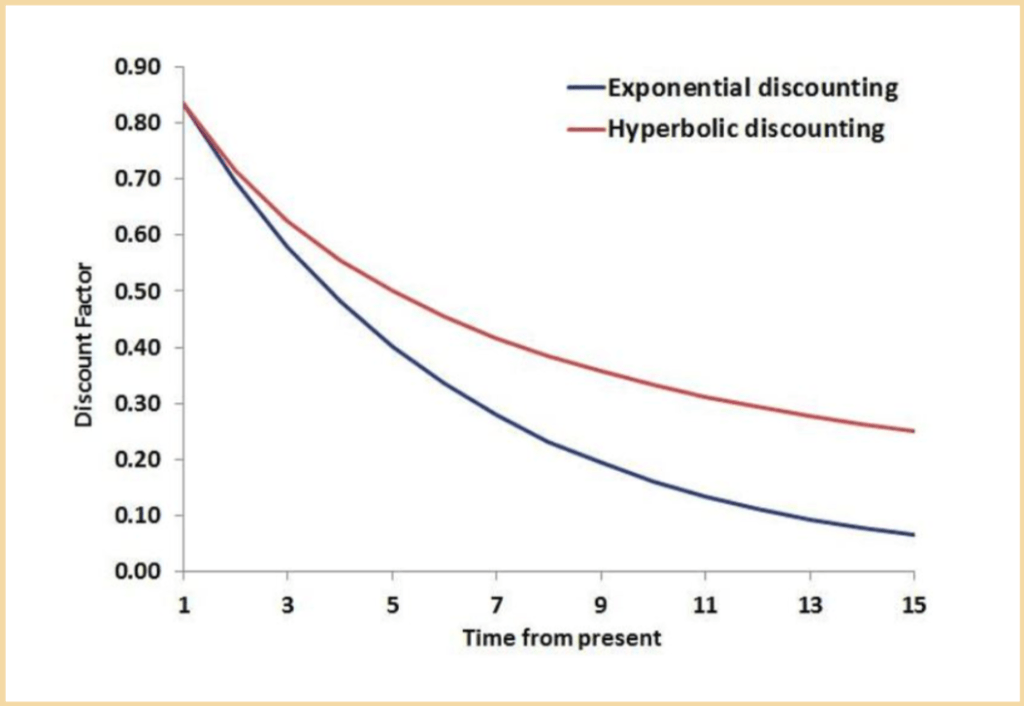
Source: Neil Patel
The history of present bias
Present bias and other forms of time discounting have traditionally been investigated by both psychologists and economists.
The term “hyperbolic discounting” was first introduced in the 1960s by Richard Herrnstein, a psychologist known for his work on decision-making in animals.
Shortly after that, economists Phelps and Pollak added to the literature by suggesting that, while we may be present biased, we rarely apply the same bias to different points in the future relative to each other – in what’s now known as quasi-hyperbolic discounting.
The study of present bias in its current form became popular in the 1990s, after influential work by behavioral economists such as David Laibson and the Nobel-prize winner Richard Thaler.
More generally, present bias is a well-known and documented phenomenon across cultures and disciplines.
As Ted O’Donoghue and Matthew Rabin – two other economists associated with present bias research – write in one of their several papers on the subject, “the notion that people are susceptible to the over-pursuit of immediate gratification dates (at least) to the ancient Greeks.”
Present bias experiments
Since these initial studies, several famous experiments have helped to demonstrate the effects of present bias and other types of hyperbolic discounting.
The Stanford marshmallow experiment
One of the most famous studies in all of psychology, Walter Mischel’s Stanford marshmallow experiment tested the effects of present bias by giving children a choice between a smaller, immediate or larger, delayed reward.
In the experiment, children could take one treat from the table, or they could wait fifteen minutes and be given two treats.
Researchers tested children under varying conditions, such as leaving both rewards in the room or removing them from view while the child waited.
75% could delay gratification for a larger reward when not tempted with the snack directly in front of them.
None of the children in the study were able to wait fifteen minutes when they could see both treats. But 75% could delay gratification for a larger reward when not tempted with the snack directly in front of them.
Even when timeframes were minimally adjusted (such as not being able to immediately reach out and take the candy) the effects of present bias were diminished.
Procrastination and preproperation
We’re more likely to pursue immediate rewards (preproperate) and avoid immediate costs (procrastinate).
In 1999, O’Donoghue and Rabin’s paper, “Doing it Now or Later,” helped rethink economic models that had previously assumed people value rewards and costs in a time-consistent manner.
Their behavioral research shows we’re more likely to pursue immediate rewards (preproperate) and avoid immediate costs (procrastinate).
Loss aversion and investors
A behavioral economics concept that’s closely tied to present bias is loss aversion – the tendency to dislike losing things over gaining equally valuable things.
Loss aversion and present bias can manifest together in what behavioral economists call “myopic loss aversion” – with ‘myopic’ meaning nearsighted.
Investors who continually checked the value of their stocks and sought frequent updates on their investments were inclined to take fewer risks and earned less money overall.
Myopic loss-averse individuals are sensitive to losses and are focused on the current state of their investments. As Thaler, Tversky, Kahneman, and Schwartz showed in their 1997 study, this can cause unwarranted meddling that prevents lower long-term returns.
The study found that investors who continually checked the value of their stocks and sought frequent updates on their investments were inclined to take fewer risks and earned less money overall.
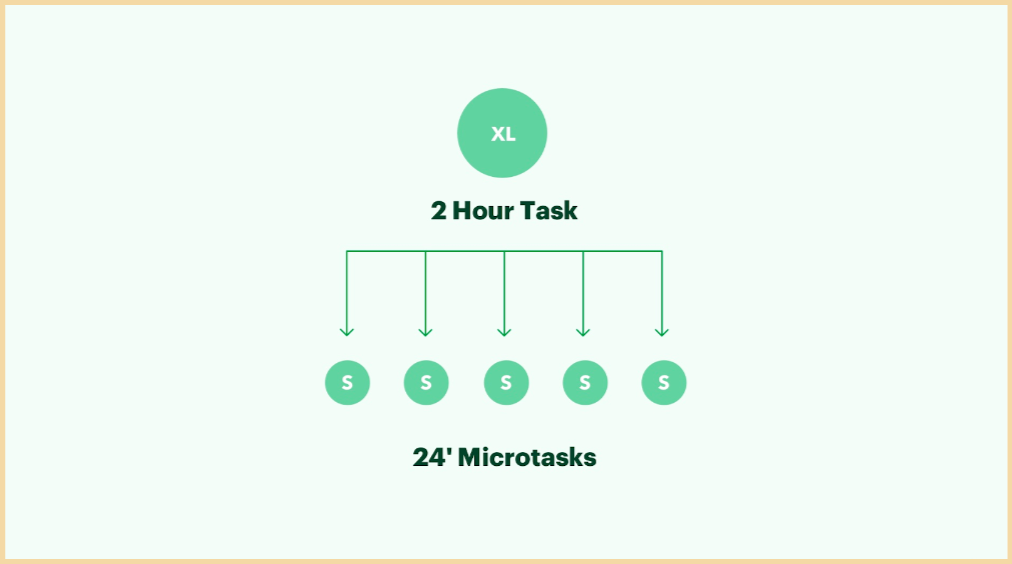
Source: selftstart
How to avoid present bias
Here are four strategies for avoiding present bias and making more rational tradeoffs:
1. Break up tasks to bring rewards forward
This strategy can turn present bias into a motivational tool, as you may feel more incentivized to complete tasks when the reward is nearer at hand.
If you’re struggling to beat your present bias, why not work with it? Dividing longer tasks into a series of shorter activities allows you to see your progress and experience ‘wins’ more quickly.
This strategy can turn present bias into a motivational tool, as you may feel more incentivized to complete tasks when the reward is nearer at hand.
2. Counterbalance your bias against future options
The further away an event occurs, the less we tend to focus on it. So, when making a decision that involves looking ahead, try accounting for present bias by consciously allocating extra value to the further away option. This may help you more accurately see the pros and cons.
3. Train your willpower muscle
Some psychologists view willpower, or ego, as a muscle that can be trained and strengthened like any other in the body. By practicing self-control in small decisions, you could increase your willpower and resist present bias in more significant or tempting situations.
4. Imagine your future self as another person
It can be helpful to think about your future self as a separate person. This may help you better relate to the long-term consequences of your decisions.
When making a decision, think about how your future self would feel about your choice. Will they be happy with the outcome? Or will they feel as though they’ve been treated unfairly by your actions?
Present bias examples and case studies
Drunk driving
People who display impulsive behaviors are often present-biased. One example of this correlation can be found in drunk drivers.
A 2014 study on the characteristics of drunk drivers found that people who engage in this crime are more likely to have “time-inconsistent preferences” than people who drink alcohol but don’t drink-drive.
The study found this to be the case even when drunk drivers “understand the fundamentals of DWI law better than others.”
Cancer diagnoses
Like many healthcare issues, present bias can explain the gap between cancer-screening guidelines and patient behavior.
A 2015 study looked at the impact of present bias on women’s decisions to follow recommendations and undergo mammography exams. It found that patients are often naive about the extent and impact of their present bias and underestimate the long-term costs of “under-utilization of mammography.”
Spending too much on vacation
Tourists have to balance their plans and expectations with unforeseen situations. This can result in “overspending behavior” when on vacation.
According to a 2016 paper from the journal Tourism Management, present bias is one of the reasons behind this trend, along with a desire to avoid unmet expectations.
It says that present bias can be at play both when tourists are planning their vacations, and when spending money during them.
When planning a trip, present bias can cause tourists to “underestimate the stimulating effect of the travel experience on their preferences.” In other words, they focus too much on their current perspective when setting a budget.
And during a trip, the study found that present-biased tourists are less likely to “limit their use of credit cards to avoid their impulsive buying behavior,” meaning that they again prioritize their current situation.
Procrastination
One of the most recognizable examples of present bias in everyday life is procrastination.
When economists studied the effects of fixed deadlines on students’ working habits, they found that “present bias is relatively widespread,” causing the students to show diminished self-control when making decisions around deadlines.
The study also reported that when work was split into “multiple repeated tasks,” students were able to reduce the effects of present bias and “activate effective internal self-control mechanisms.”
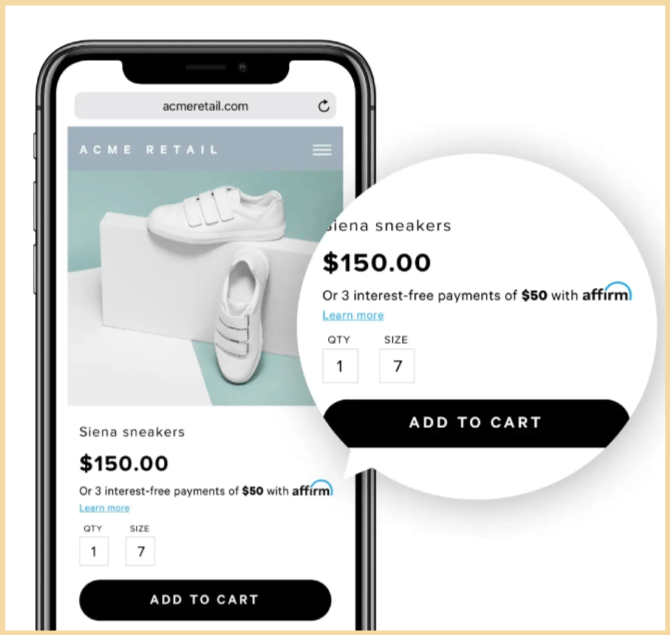
Source: Woo Commerce
How to use present bias in business
Businesses may choose to encourage or combat customers’ present bias, depending upon whether they want customers to buy/use a product right now, or see the longer-term benefits of investing in a service.
Designing against present bias
One way to help users fight present bias is to make it easier for them to track incremental progress toward goals. This reduces the time difference between actions and rewards.
Another similar design strategy is to introduce comparison features that help users objectively evaluate the difference between their current situation and future aims.
Thirdly, products designed to reduce present bias should prioritize immediate feedback and rewards for users who make progress toward their goals.
Designing for present bias
When building products to encourage present bias, designers often structure benefits so that customers receive rewards quickly. This is because present bias says that immediate benefits appear more valuable than those further away.
More generally, products that encourage present bias should make it easy for users to make impulsive decisions.
That could mean time-limited retail sales, free trials, or otherwise reducing friction around user actions. Allowing customers to “buy now” and “pay later” is essentially an invitation to participate in present-biased thinking.
Summary
What is present bias?
Present bias is a tendency to consider our current situation more than future situations when making decisions.
What impact does present bias have?
Present-biased people are more likely to avoid immediate discomforts and pursue immediate rewards, even if those behaviors lead to less beneficial results in the long term.
As a result, present bias can cause procrastination, impulsivity, and time-inconsistent choices – where decisions made today aren’t carried out tomorrow.
In business, present bias can be used to motivate users through frequent rewards but may also dissuade customers from buying products that have delayed benefits.
Some people are more present-biased than others, which can lead to disagreements about the value of short-term and long-term options.
How can I avoid present bias?
- Bring rewards closer by breaking up tasks into smaller chunks.
- Acknowledge the effects of present bias by giving extra value to future options.
- Instead of thinking about choices affecting your future self, imagine them applying to another person in the present.

